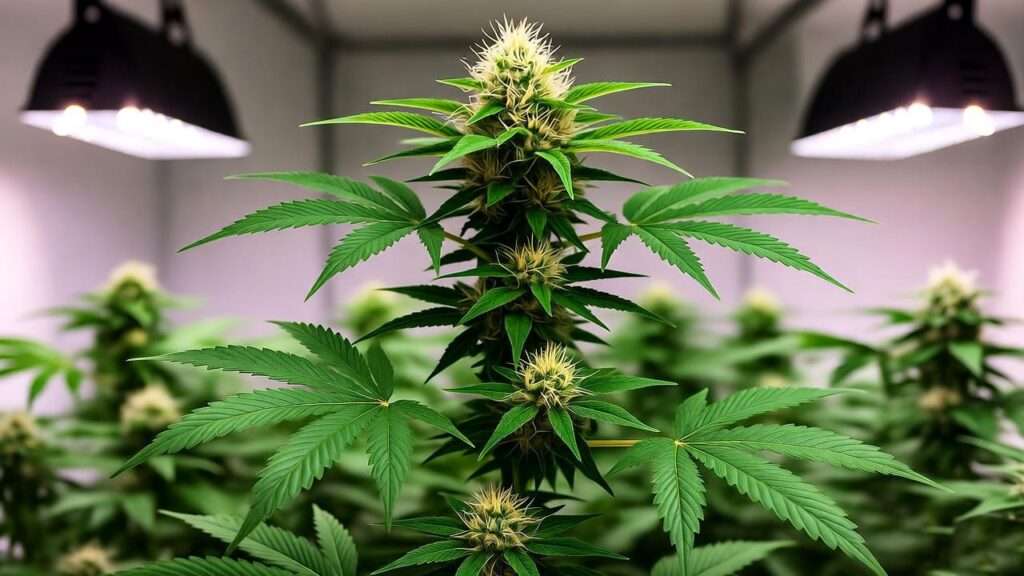Imagine harvesting your own Mango Kush plant, its vibrant buds bursting with tropical, mango-like aromas that fill your grow space with promise! 🌱 Whether you’re a novice grower or a seasoned cultivator, mastering the art of growing a Mango Kush plant can transform your gardening journey into a rewarding adventure. This Indica-dominant cannabis strain, celebrated for its fruity flavor and robust growth, thrives with the right care. In this comprehensive guide, crafted with insights from horticulture experts, we’ll walk you through every step to cultivate a healthy, high-yielding Mango Kush plant. From germination to harvest, you’ll find actionable tips to ensure success, backed by years of cultivation experience.
Our goal is to empower you with a clear, expert-driven roadmap to grow Mango Kush successfully, addressing common challenges and optimizing for vibrant yields. Let’s dive into the world of cannabis cultivation and unlock the secrets to a flourishing Mango Kush garden! 🌸
1. Understanding the Mango Kush Plant 🌸
1.1 What is Mango Kush?
Mango Kush is a beloved hybrid cannabis strain, leaning heavily Indica (typically 65% Indica, 35% Sativa), known for its sweet, mango-infused aroma and relaxing effects. With THC levels ranging from 16% to 20%, it’s a favorite for both recreational users seeking a calming high and medicinal users easing stress or pain. Its dense, resinous buds and vibrant green foliage make it a visually striking addition to any grow setup. Mango Kush’s resilience and moderate growth difficulty make it ideal for beginners and experts alike, offering a balance of ease and rewarding yields.
1.2 Ideal Growing Conditions for Mango Kush
Mango Kush thrives in warm, Mediterranean-like climates with temperatures between 70-85°F (21-29°C). It adapts well to both indoor and outdoor environments, though indoor setups allow better control over light and humidity. Outdoors, it prefers sunny, well-drained locations. Compared to finicky strains like Blue Dream, Mango Kush is forgiving, making it a great choice for growers learning the ropes. Key to its success are consistent conditions: moderate humidity (40-50% during flowering), well-aerated soil, and ample light.
Expert Insight: “Mango Kush’s hardy genetics make it a go-to for growers seeking high yields with manageable effort,” says Dr. Emily Harper, a cannabis horticulturist with over 15 years of experience.
2. Preparing to Grow Mango Kush 🌱
2.1 Choosing the Right Seeds or Clones
High-quality genetics are the foundation of a thriving Mango Kush plant. Source seeds or clones from reputable breeders like ILGM or Seedsman, ensuring they’re feminized to avoid male plants. Look for seeds with dark, tiger-striped shells or clones with strong, healthy roots. Verify authenticity by checking breeder certifications or customer reviews. Poor genetics can lead to weak plants or low potency, so invest in trusted sources to maximize your crop’s potential.
2.2 Essential Equipment and Supplies
To grow Mango Kush successfully, you’ll need:
- Grow Lights: Full-spectrum LED lights (e.g., Mars Hydro) for energy efficiency and optimal growth.
- Pots: 3-5 gallon fabric pots for breathability and root health.
- Soil/Nutrients: Organic soil (e.g., FoxFarm Ocean Forest) and cannabis-specific nutrients (e.g., General Hydroponics Flora Series).
- pH Tester: To maintain water and soil pH between 6.0-6.5.
- Ventilation: Inline fans and carbon filters for air circulation and odor control.
Budget-conscious growers can opt for affordable LEDs like Spider Farmer or DIY ventilation systems, but prioritize quality where possible.
2.3 Setting Up Your Grow Space
Indoor: Designate a clean, enclosed space (e.g., a grow tent) with reflective walls to maximize light. Install 600W LED lights for 1-4 plants, ensuring 18-24 inches of space between plants and lights. Maintain airflow with oscillating fans and a carbon filter to manage Mango Kush’s pungent aroma.
Outdoor: Choose a sunny spot with at least 6 hours of direct sunlight. Ensure well-draining soil and protect plants with netting to deter pests.
Cleanliness: Sterilize equipment to prevent mold or pests, and monitor temperature (70-85°F) and humidity (50-60% during vegetative growth).
Pro Tip: Use this checklist to set up your grow space:
- Secure high-quality seeds/clones
- Install full-spectrum lighting
- Test soil pH and drainage
- Set up ventilation system
3. Step-by-Step Mango Kush Cultivation Guide 🌿
3.1 Germination and Seedling Stage
Germination is the first step to a thriving Mango Kush plant. Use the paper towel method: place seeds between damp paper towels in a dark, warm (75-80°F) place for 24-72 hours until a taproot appears. Transfer sprouted seeds to small pots with pre-moistened soil, planting ¼ inch deep. Keep seedlings under 24-hour light (CFL or low-wattage LED) and maintain 70-80% humidity. Avoid overwatering—use a spray bottle to mist soil lightly. Common mistakes include over-soaking seeds or exposing them to cold, which can stunt growth.
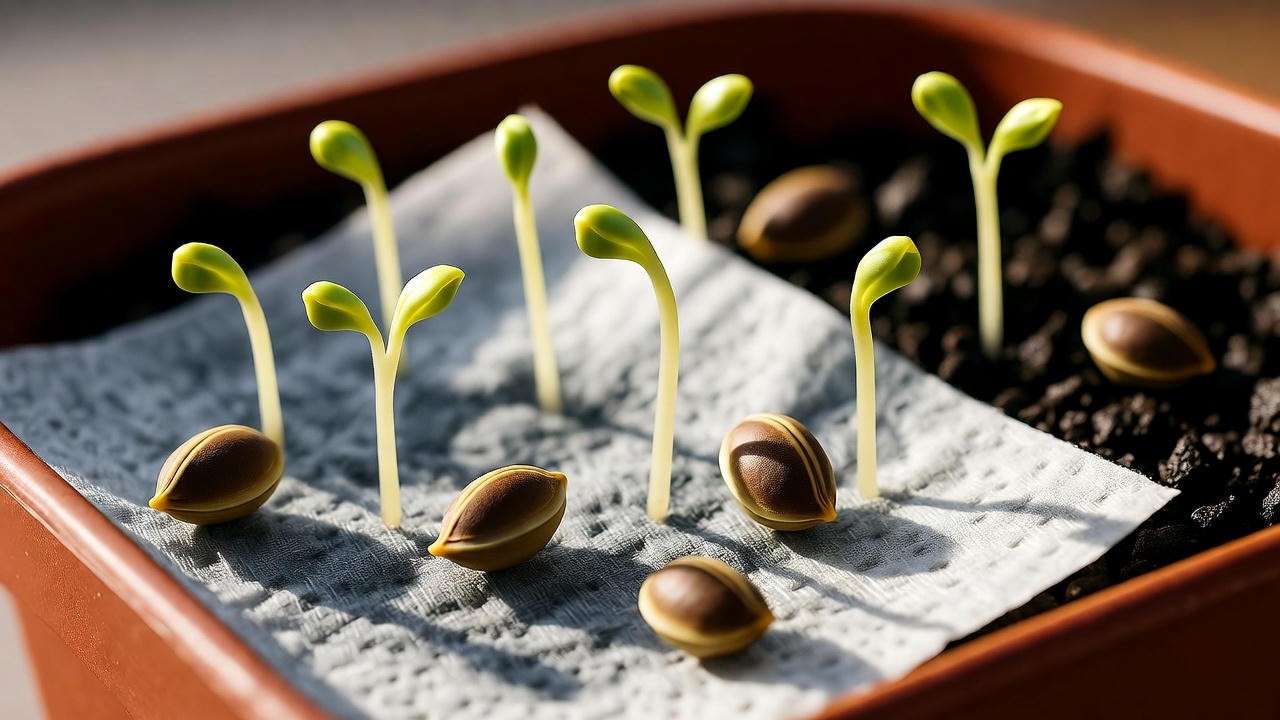
3.2 Vegetative Growth Phase
During the vegetative stage (3-6 weeks), Mango Kush develops its structure. Switch to an 18/6 light cycle (18 hours on, 6 off) to promote leafy growth. Feed plants nitrogen-rich nutrients (e.g., 10-5-5 NPK ratio) every 7-10 days, diluted to half-strength to avoid burn. Train plants using low-stress techniques like bending branches or topping to encourage bushier growth and higher yields. Maintain 50-60% humidity and 75-80°F. Check for yellowing leaves, which may indicate overwatering or nutrient lockout.
Timeline Example:
- Week 1: Germination complete, seedlings under light.
- Week 2-3: Focus on root development, light feeding.
- Week 4-6: Begin training, increase nutrient strength.
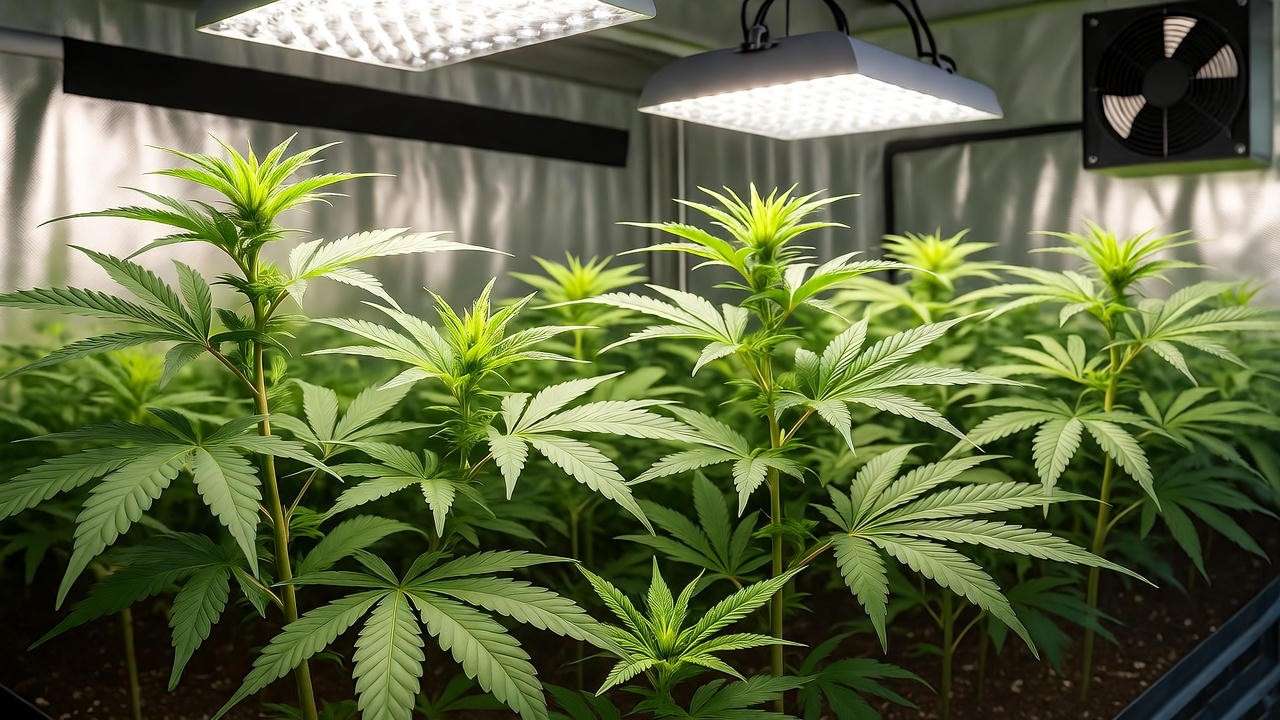
3.3 Flowering Stage
Transition to flowering by switching to a 12/12 light cycle. Mango Kush typically flowers in 8-10 weeks. Shift to phosphorus- and potassium-rich nutrients (e.g., 5-10-10 NPK) to support bud development. Lower humidity to 40-50% to prevent mold. Monitor trichomes with a jeweler’s loupe—harvest when 70-90% are cloudy with amber tips for peak potency. Avoid light leaks during dark periods, as they can stress plants and reduce yields.
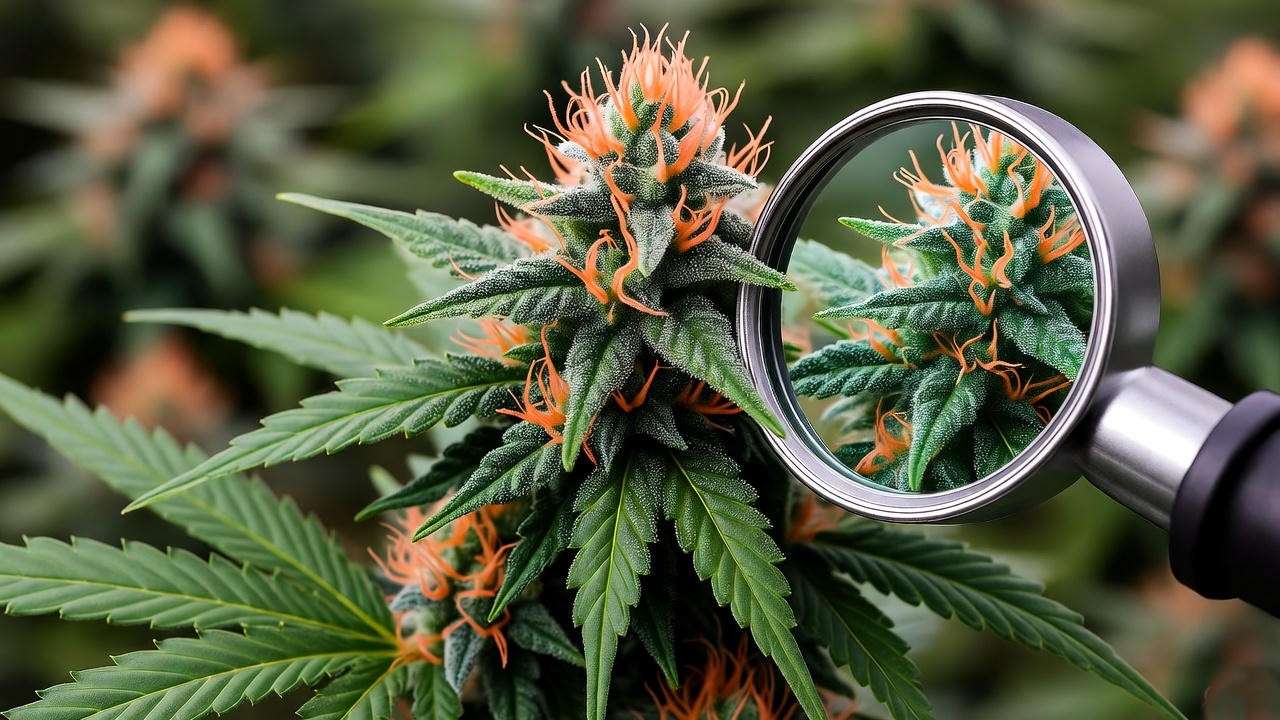
4. Optimizing Growth: Advanced Care Tips 🌟
4.1 Watering and Nutrient Management
Watering Mango Kush requires precision to avoid stress. Water every 2-3 days during the vegetative stage, ensuring the top inch of soil dries out between sessions. Use pH-balanced water (6.0-6.5) to prevent nutrient lockout. During flowering, reduce frequency slightly to avoid bud rot. Organic nutrients, like compost tea or fish emulsion, enhance flavor, while synthetic options like Advanced Nutrients offer precise control. Watch for signs of nutrient deficiencies: yellowing lower leaves (nitrogen deficiency) or brown leaf tips (nutrient burn). Flush plants with plain water every 3-4 weeks to clear excess salts.
Pro Tip: Use a moisture meter to gauge soil wetness and prevent overwatering, a common mistake for new growers.
4.2 Pest and Disease Prevention
Mango Kush is resilient but not immune to pests like spider mites, aphids, or whiteflies. Inspect leaves weekly, focusing on undersides, and use neem oil or insecticidal soap for organic control. Introduce beneficial insects like ladybugs for outdoor grows. Diseases like powdery mildew or root rot thrive in high humidity or poor drainage. Maintain good airflow, avoid overwatering, and apply organic fungicides like potassium bicarbonate if needed. Companion plants like basil or marigolds can deter pests naturally.
Preventative Checklist:
- Ensure proper ventilation to reduce humidity.
- Use sticky traps to monitor pest activity.
- Sterilize tools to prevent disease spread.
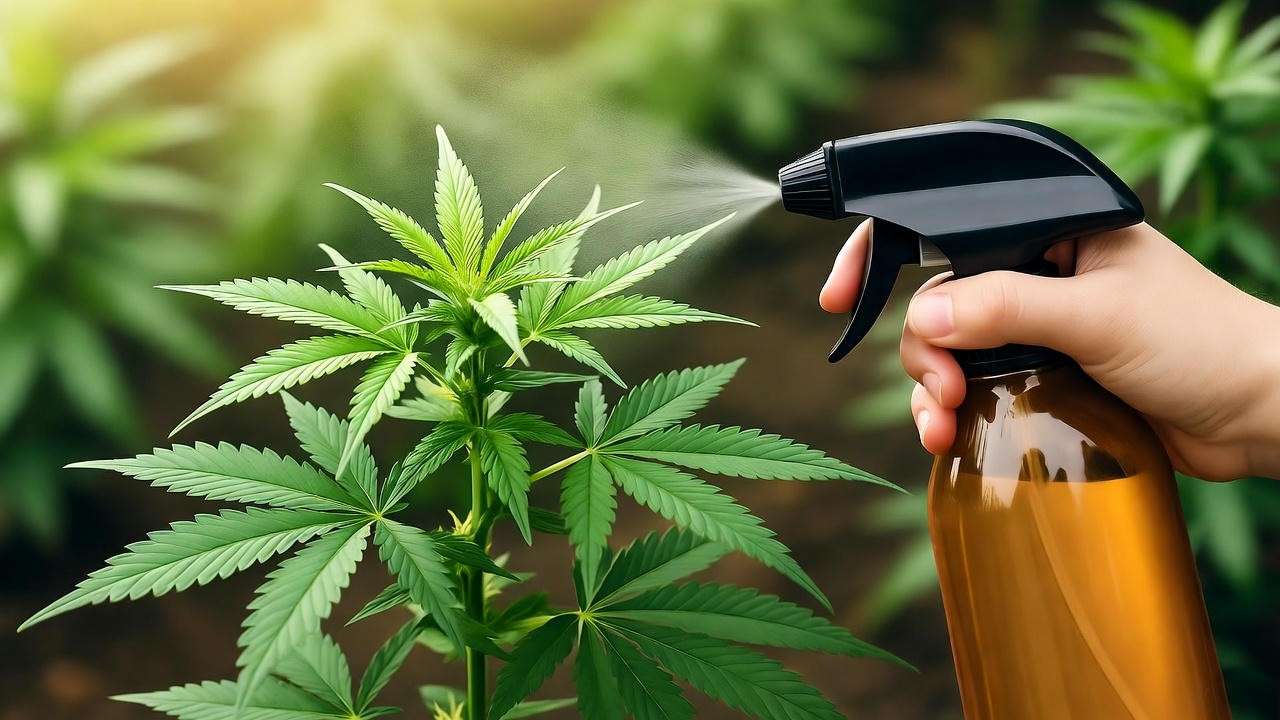
4.3 Maximizing Yield and Potency
To boost Mango Kush yields, try advanced techniques like SCROG (Screen of Green), where a mesh screen encourages horizontal growth, exposing more bud sites to light. Alternatively, SOG (Sea of Green) maximizes space by growing smaller plants closely together. Maintain light intensity at 600-1000 µmol/m²/s during flowering for optimal bud development. Post-harvest, proper drying and curing enhance potency and flavor. Dry buds at 60-65°F and 50% humidity for 7-14 days, then cure in airtight glass jars for 2-4 weeks, burping daily to release moisture.
Expert Insight: A 2023 study in Cannabis Science and Technology found that optimized light spectrums can increase terpene content by up to 20%, enhancing Mango Kush’s signature mango flavor.
5. Troubleshooting Common Mango Kush Growing Issues ⚠️
5.1 Yellowing Leaves or Stunted Growth
Yellowing leaves often signal overwatering, nutrient deficiencies, or light stress. Check soil moisture—if soggy, reduce watering and improve drainage. Nitrogen deficiency causes lower leaves to yellow; supplement with a nitrogen-rich fertilizer. If plants are too close to lights (less than 12 inches), raise lights to prevent burn. Test soil pH to ensure nutrients are accessible. Stunted growth may indicate root-bound plants; transplant to larger pots if roots circle the container.
5.2 Slow Flowering or Low Yields
Slow flowering can result from improper light cycles or nutrient imbalances. Ensure a strict 12/12 light cycle during flowering, with no light leaks. Phosphorus deficiency may delay bud formation—switch to a bloom booster (e.g., 5-15-15 NPK). Low yields often stem from inadequate light or poor training. Increase light intensity or prune lower branches to focus energy on top buds. Monitor trichomes to avoid harvesting too early, which reduces potency.
5.3 Dealing with Mold and Mildew
Bud rot and powdery mildew thrive in humid, poorly ventilated environments. Inspect buds closely during flowering, especially dense ones, for grayish mold. Remove affected areas immediately and improve airflow with fans. For powdery mildew (white patches on leaves), apply a 1:10 milk-water solution as an organic treatment. Prevent issues by keeping humidity below 50% during flowering and spacing plants to allow air circulation.
Troubleshooting Flowchart:
- Symptom: Yellow leaves → Check watering schedule → Test soil pH → Adjust nutrients.
- Symptom: Slow flowering → Verify 12/12 light cycle → Increase phosphorus.
- Symptom: Mold → Lower humidity → Improve ventilation → Apply organic treatment.
6. Harvesting and Post-Harvest Care 🌾
6.1 When and How to Harvest Mango Kush
Harvest timing is critical for Mango Kush’s potency and flavor. Check trichomes with a 60x jeweler’s loupe—harvest when 70-90% are cloudy with 10-20% amber for a balanced effect. Cut plants at the base or trim individual branches. Use clean, sharp scissors to remove fan leaves, leaving sugar leaves intact for curing. Harvest in the morning when terpene levels peak for the best aroma.
6.2 Drying and Curing for Maximum Quality
Dry buds in a dark, well-ventilated space at 60-65°F and 50-55% humidity for 7-14 days. Hang branches upside down or use drying racks, ensuring buds don’t touch to prevent mold. Buds are ready when small stems snap cleanly. Cure in airtight glass jars, filling them 75% full to allow air circulation. Store jars in a cool, dark place (60-65°F), burping daily for the first two weeks to release moisture. Cure for at least 2-4 weeks, though 6-8 weeks enhances flavor.
Curing Schedule:
- Day 1-7: Burp jars twice daily for 10 minutes.
- Day 8-14: Burp once daily.
- Week 3+: Burp weekly; check for mold.
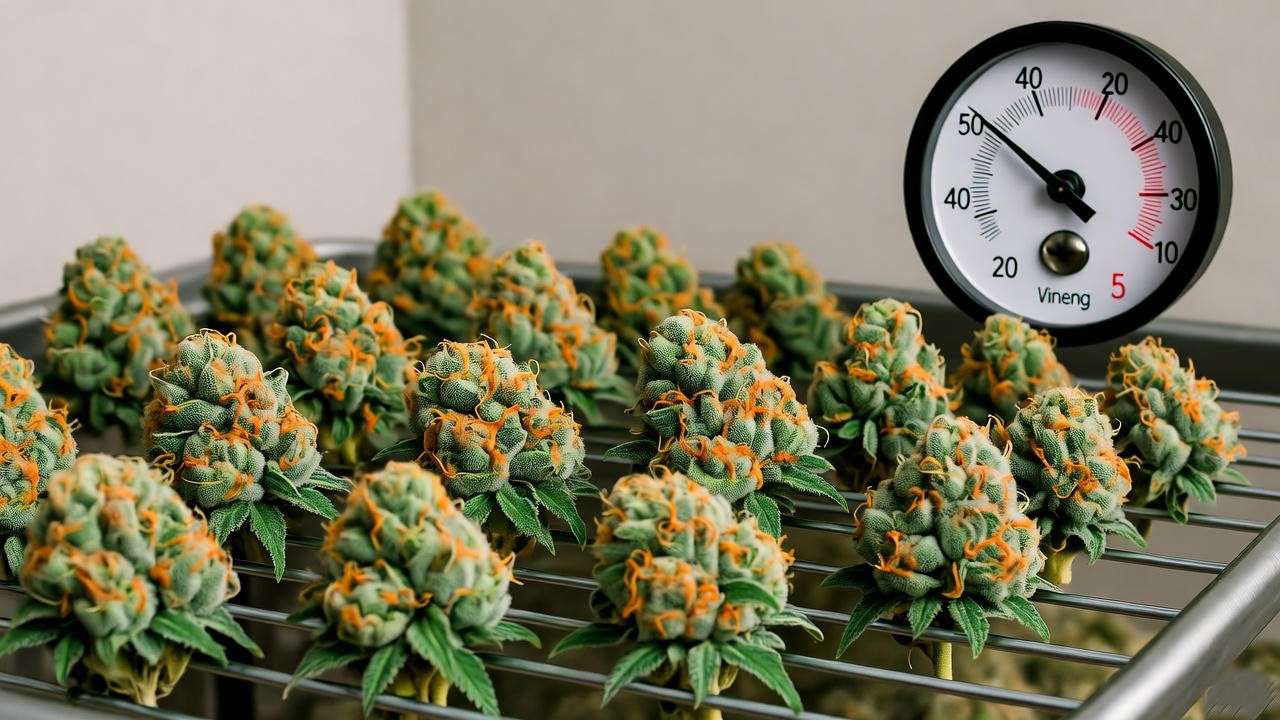
6.3 Storage Tips
Store cured Mango Kush in airtight glass jars with humidity packs (e.g., Boveda 62%) to maintain freshness. Keep jars in a cool, dark place to preserve terpenes and cannabinoids. Avoid plastic bags, which can degrade quality. Properly stored buds can last up to a year without significant potency loss.
7. Legal and Ethical Considerations for Growing Mango Kush ⚖️
Cannabis cultivation laws vary widely. In the U.S., states like California and Colorado permit home growing (typically 6-12 plants), but always check local regulations. Internationally, countries like Canada and Uruguay allow personal cultivation, while others prohibit it. Ethically, prioritize sustainable practices: use organic nutrients, conserve water, and recycle grow materials. Support local grower communities by sharing knowledge and sourcing seeds ethically. Avoid chemical pesticides that harm the environment.
Expert Insight: “Sustainable cannabis cultivation not only benefits the planet but also enhances crop quality,” notes Jane Rodriguez, a cannabis policy advocate.
8. FAQs About Growing Mango Kush ❓
Q1: How long does it take to grow Mango Kush from seed to harvest?
A: Typically 10-12 weeks (3-4 weeks vegetative, 8-10 weeks flowering).
Q2: Can Mango Kush be grown hydroponically?
A: Yes, it thrives in hydro systems like DWC, but requires precise nutrient and pH management.
Q3: What’s the best soil mix for Mango Kush?
A: Use a mix of 60% organic potting soil, 20% perlite, and 20% coco coir for drainage and aeration.
Q4: How much yield can I expect from one Mango Kush plant?
A: Indoors, expect 400-500g/m²; outdoors, 500-700g per plant under optimal conditions.
Q5: Are there any companion plants that benefit Mango Kush?
A: Basil, marigolds, or chamomile deter pests and enhance soil health.
9. Conclusion: Your Path to a Thriving Mango Kush Plant 🌈
Growing a thriving Mango Kush plant is within your reach with the right knowledge and care. From selecting quality seeds to mastering germination, vegetative growth, and flowering, this guide equips you with expert-backed strategies to achieve vibrant yields. By addressing common challenges like pests, nutrient deficiencies, and mold, you can cultivate healthy plants with potent, flavorful buds. Start your Mango Kush journey today, and share your experiences in the comments below! Explore our other plant care guides for more tips to elevate your gardening game.

